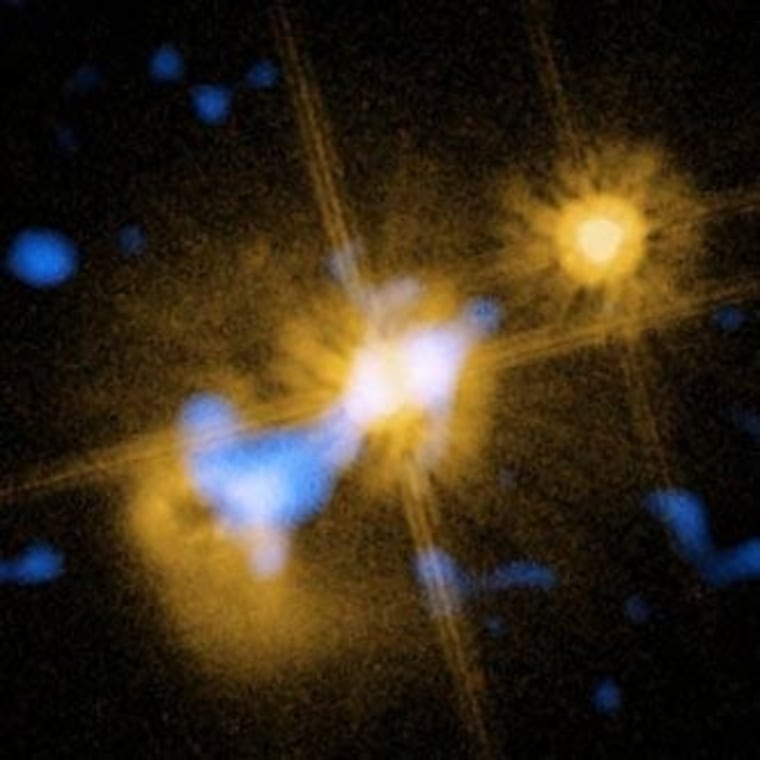Astronomers have long wondered which came first, the black hole or the galaxy around it. The leading theory holds that the two co-evolve, starting small and building over time.
But colossal black holes may zap galaxies into existence from scratch, new observations suggest.
Astronomers recently observed a peculiar large black hole that did not belong to a surrounding galaxy as expected. Until now, scientists thought that this black hole's host galaxy was merely shrouded in dust and rendered invisible to us.
The black hole, designated HE0450-2958, is located about 5 billion light-years away from Earth. It is a type of supermassive black hole known as a quasar, which releases extremely bright jets of high-energy light.
Researchers used the European Southern Observatory's Very Large Telescope to capture new observations of the quasar targeted to search for dust in long-wavelength infrared light.
"Observing at these wavelengths would allow us to trace dust that might hide the host galaxy," said Knud Jahnke of the Max Planck Institute for Astronomy in Heidelberg, Germany, who led the observations. "However, we did not find any. Instead we discovered that an apparently unrelated galaxy in the quasar's immediate neighborhood is producing stars at a frantic rate."
The astronomers think the black hole is powering star formation in the nearby galaxy by spraying its jets of high-energy particles toward it. In fact, the quasar could have triggered the galaxy's formation in the first place when its energetic jets hit nearby clouds of gas. And as time goes on, the neighboring galaxy will likely grow to encompass the black hole at last.
"The two objects are bound to merge in the future: The quasar is moving at a speed of only a few tens of thousands of kilometers per hour with respect to the companion galaxy, and their separation is only about 22,000 light-years," said researcher David Elbaz of the Service d'Astrophysique, CEA Saclay in France. "Although the quasar is still 'naked,' it will eventually be 'dressed' when it merges with its star-rich companion. It will then finally reside inside a host galaxy like all other quasars."
The astronomers detailed their findings in a paper published recently in the journal Astronomy & Astrophysics and an upcoming paper in the Astrophysical Journal.
